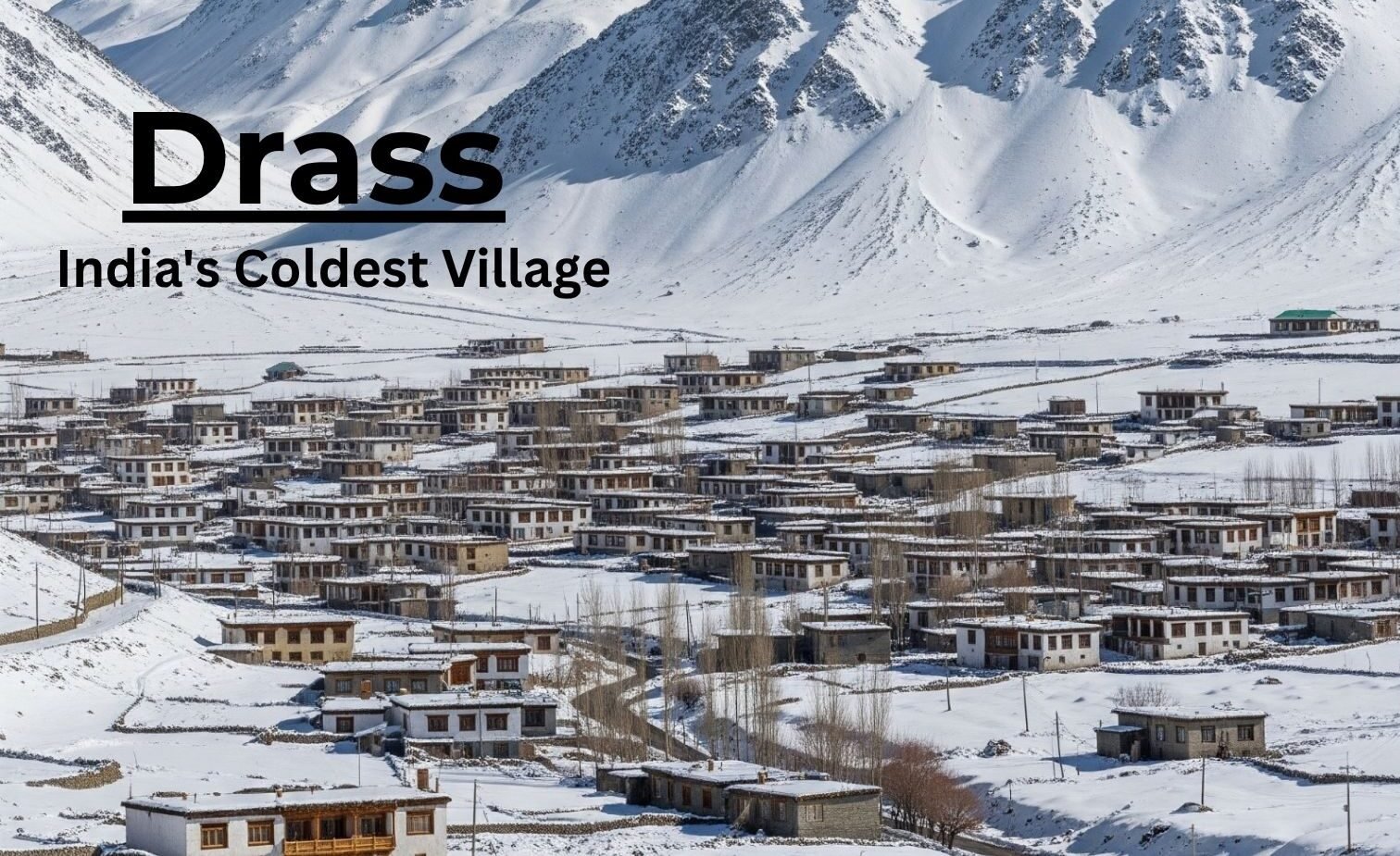What does it mean to be cold? We, in the cities, think we know. But a journey to Drass, in the Kargil district of Ladakh, redefines the very essence of the word. This is a place where temperatures plunge to -30°C on a regular winter day. It’s a place where survival is an art form, a science, and a daily act of will. I went to Drass to understand the cold, but I left having learned about the incredible power of human warmth.
For those curious about this extraordinary place, let’s start with the facts. Drass is officially the coldest inhabited place in India and the second coldest in the world. It holds a record low of -60°C, set in 1995. It is also home to the poignant Kargil War Memorial. A trip here is not a casual vacation; it is an expedition that requires mental and physical preparedness for extreme conditions, and an open heart for the community that calls this beautiful, harsh land home.
The Science of Cold: Why Drass Freezes
To understand the people of Drass, you must first understand the science of their environment. Several factors conspire to create these extreme temperatures:
- Altitude and Geography: Situated at a high altitude in the Zanskar mountain range, Drass is effectively in a cold desert.
- Lack of Humidity: The dry air cannot hold heat, allowing temperatures to plummet as soon as the sun sets.
- Reflective Snow: The vast blanket of snow reflects sunlight away, preventing the ground from warming up.
This creates a phenomenon where boiling water thrown into the air at -26°C or below instantly crystallizes into ice—a stunning demonstration of the Mbemba effect. It’s one thing to read about it, and another to see it firsthand.
The Art of Survival: A Look Inside a Drass Home
Survival here is an architectural marvel. I was welcomed into a traditional mud house, a fortress designed against the cold. The ingenuity is breathtaking:
- Insulation: Multiple doors create airlocks. Thick carpets, foam, and heavy wool line the walls and floors.
- The Bukhari: The heart of the home is the Bukhari, a traditional wood and cow-dung-fueled heater, around which all life revolves.
- Water and Sanitation: Water pipes freeze solid, so handpumps outside are meticulously wrapped in foam to remain usable. Toilets are dry to avoid the problem of frozen plumbing altogether.
Daily life is a masterclass in adaptation. Clothes washed and hung outside freeze stiff as cardboard. Different rooms are used for storing essentials gathered between June and September: one for barley and sattu, one for wood, and another for dried cow dung cakes used as fuel.
A Walk on the Ice: My Journey to the Frozen Waterfall
To feel the landscape, I decided to walk to a nearby frozen waterfall. The journey was a lesson in humility. I had to cross a narrow suspension bridge, its wooden planks covered in treacherous, slippery snow. At one point, my foot slipped on an icy patch of the frozen river below, a heart-stopping moment that reminded me of the constant danger.
But the reward was sublime. Standing before the waterfall, a colossal crystal sculpture carved by nature, was a moment of pure awe. The world was silent, save for the crunch of snow under my boots. It was in that silence that I truly felt the raw, untamed beauty of Drass.
The Human Warmth in the Coldest Place
The most unforgettable part of Drass is not its cold, but its warmth. It’s in the unsolicited gestures of kindness. An aunty I met insisted I stay for a full meal of warm barley and ghee, exclaiming, “I thought you came only for tea!” I watched children, their cheeks red from the cold, playing ice hockey with makeshift gear, their laughter echoing in the crisp air. I saw them diligently attending tuition classes even in bone-chilling weather. I met a young girl who had lovingly named her 1.5-month-old calf “Lulu.”
This human resilience is set against the backdrop of history at the Kargil War Memorial. Reading the names of the 397 martyrs etched onto the sandstone wall, seeing the real weapons and a MiG aircraft on display, is a deeply emotional experience. The 1999 Kargil War is not a distant memory here; it is a part of the land’s psyche. The pride in the eyes of the local Shina-speaking people is palpable. As one gentleman told me, “We live here proudly. This is the second coldest place in the world.”
A Traveler’s Guide to Visiting Drass
- Prepare for Extreme Cold: This means multiple thermal layers, insulated and waterproof outerwear, gloves, a balaclava, and warm, waterproof boots.
- Health is Paramount: The risk of frostbite is real. Do not expose your skin to the cold for extended periods. Acclimatize properly to the high altitude.
- Respect Local Life: You are a guest in a community that has mastered survival. Be respectful, accept hospitality graciously, and don’t take photos without permission.
- Be Mentally Ready: The isolation, the cold, and the emotional weight of the War Memorial can be intense. Come prepared for a reflective and sometimes challenging experience.
A Final Reflection
My journey to Drass was a reality check. While we complain about small discomforts in our centrally-heated city lives, the people of Drass survive unimaginable conditions with smiles and open hearts. It taught me a profound lesson: facilities aren’t everything. Attitude, community, and the resilience of the human spirit matter more.
Drass is a place that freezes your body but thaws your soul.

Leave a Reply